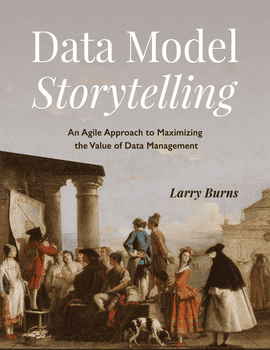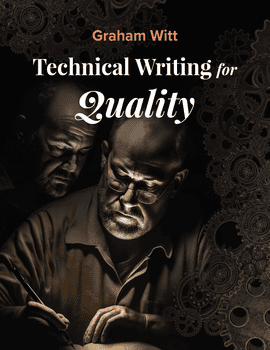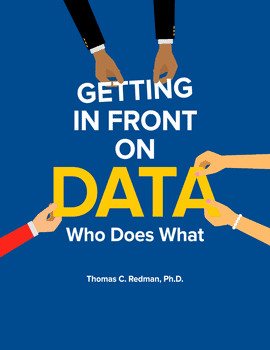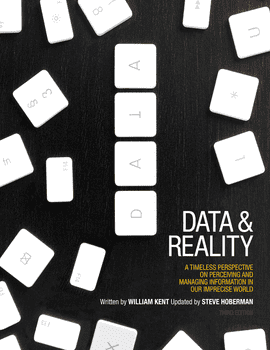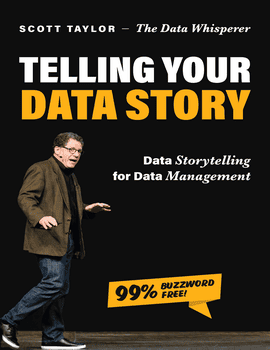Data Model Storytelling
Data Model Storytelling: An Agile Approach to Maximizing the Value of Data Management, by Larry Burns
What value does data modeling contribute to an organization, and how can that value be increased?
Topics
Section I: Data Model Storytelling
Chapter 1: The Data Model, Reimagined
The Purpose of Data Models
The Infamous “Timesheet” Example, Revisited
Logical vs. Physical Data Models
Chapter 2: Data Modeling As Storytelling
Model-Driven Development
Agile Models
The Story a Data Model Tells
Chapter 3: The Essence of Storytelling
Principles of Storytelling
Lessons From Toastmasters
Chapter 4: Who Is Our Audience?
The Importance of Stakeholders
Types of Data Management Stakeholders
Communicating With Stakeholders
A True Story
Chapter 5: Data Model Shamanism
Shamanism Explained
Shamanism in Data Management
The Shaman as Tribal Historian
Chapter 6: Interactive Data Modeling
Approaches to Interactive Modeling
Other Types of Interaction
Advantages to Interactive Modeling
Models That Talk
Chapter 7: Notes on Notations
E-R Modeling
Object-Role (Fact-Based) Modeling
Graph Modeling
UML Class Modeling
COMN Modeling
Summary
Chapter 8: Data Modeling and Process Stories
Using Data Flow Diagrams (DFDs)
“True” Stories vs. “Good” Stories
Principles of Process Reengineering
Reengineering Data Management
Caveats for Reengineering
Section II: Agile Data, Revisited
Chapter 9: What Agile Is and Isn’t
Agile as Work, Risk, and Opportunity Management
Characteristics of an Agile Approach
Having an “Agile Attitude”
What Agile is Not
Chapter 10: Agile Architecture
Advantages of Architecture
Agile and the Zachman Framework
Principles of Agile Architecture
Chapter 11: Agile Data Modeling
What a Logical Data Model Is (and Isn’t)
MDD and Agile Models
Principles of Agile Data Modeling
Chapter 12: Agile Database Design
What is Physical Data Design?
Goals of Physical Data Design
Cohesion and Coupling
Abstraction and Encapsulation
Principles of Agile Data Design
Chapter 13: Agile BI and Analytics
The BI Problem
The BI Pattern Approach
Principles of Agile BI
Section III: The Challenging Landscape
Chapter 14: Schema-less Databases
Characteristics of Schema-Less Databases
Data Modeling for Schema-Less Databases
Physical Design for Schema-Less Databases
Chapter 15: Domain-Driven Development
How Domain-Driven Development Works
Domain-Driven Development and Data Modeling
Modeling Up and Building Down
The Importance of a Canonical Data Model
The Danger of Modeling Too Small
TANSTAAFL
Chapter 16: In Search of Meaning
Differing Semantic Viewpoints
Modeling “True” vs. “Good” Stories
Modeling “The Business”
Chapter 17: Domain vs. Enterprise Modeling
Addressing the Dilemma
“Working Toward”
Onward and Upward
Section IV: Data Modeling and Design Thinking
Chapter 18: What is Design?
Characteristics of Design
The Process of Design
Obstacles to Design Thinking
Chapter 19: Human-Centered Design
Characteristics of Human-Centered Design
HCD and Agile
The Mental Matrix
The Seven Mindsets of HCD
The Process of HCD
The Goals of HCD
Examples of Human-Centered Design
Chapter 20: Data Modeling and Design
Design Thinking and Data Modeling
HCD and Data Modeling
Section V: Case Study
The Project
Data Modeling Challenges
Database Implementation Challenges
Lessons Learned
Afterword
About the Author
Notes and Resources
Acronyms and Terms
Starting with analogies from Native American storytelling traditions and drawing on his experiences as an officer in Toastmasters (the International public speaking organization), Larry shows us how we can be data modeling Shamans. We can use data models to bring people together to solve business problems, reengineer inefficient business processes, forge agreements on data meanings, create new business opportunities, and promote data quality and reuse.
Drawing from a host of disciplines, from storytelling to cognitive behavioral therapy, from landscaping to Human-Centered Design, from business process reengineering to domain-driven development, from Agile to object-oriented design, Larry weaves all these threads together into a compelling narrative of using data to get us successfully from where we are now to where we want to be!
If you’re a data professional, the bad news is that change is inevitable. But the good news is that change is not only possible, but fun! Larry’s book shows how to navigate the shoals of business and technology change, from Agile development to NoSQL databases to Domain-Driven Development to microservices to cloud computing.
The Journey starts here.
Watch the book release celebration!
About larry
Larry Burns has worked in IT for more than 40 years as a database developer, DBA, data modeler, application developer, consultant, and teacher. He holds a B.S. in Mathematics from the University of Washington, and a Master’s degree in Software Engineering from Seattle University. He currently works for a global Fortune 200 company as a Data and BI Architect and Data Engineer (i.e., data modeler). He has written numerous articles for TDAN.com and DMReview.com, and is the author of Building the Agile Database (Technics Publications LLC, 2011) and Growing Business Intelligence (Technics Publications LLC, 2016).
Faculty may request complimentary digital desk copies
Please complete all fields.
